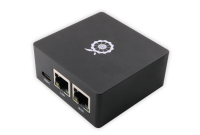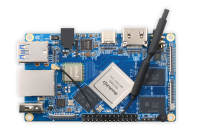Main page
Main Page
Orange Pi is an open source product brand of Shenzhen Xunlong Software Co., Ltd, which focuses on providing cost-effective open source hardware, open source software and OEM/ODM services for individuals and enterprises worldwide.
In 2014, Orange Pi's first open source product was officially launched, and received wide acclaim from the market due to its high cost performance and excellent usage experience. After years of technical innovation and market research, Orange Pi has iterated more than 30 products and become a synonym of high quality in the development board industry.
Orange Pi not only produces and sells open source hardware and open source software, but also pays attention to the service and dissemination of supporting courses and the communication and exchange of user communities. At present, Orange Pi has formed a complete open source education ecosystem covering open source hardware, open source software, open source chips, supporting videos and forum community.
For more information about Orange Pi, please visit Orange Pi website.
Contents
Products
You can find out more about the products manufactured by Orange Pi:
Development board
- Orange Pi R1 Plus LTS(With Metal Case)
- Orange Pi 3 LTS
- Orange Pi 4 LTS
- Orange Pi 3
- Orange Pi 2G-IoT
- Orange Pi 3G- IoT -A
- Orange Pi 3G- IoT -B
- Orange Pi 4G- IoT
- Orange Pi Zero
- Orange Pi Zero Plus
- Orange Pi Zero 2
- Orange Pi Zero Plus 2
- Orange Pi Zero LTS
- Orange Pi R1
- Orange Pi R1 Plus
- Orange Pi R1 Plus LTS
- Orange Pi 4
- Orange Pi 4B
- Orange Pi RK3399
- Orange Pi i96
- Orange Pi One
- Orange Pi One Plus
- Orange Pi Lite
- Orange Pi Lite 2
- Orange Pi PC
- Orange Pi PC 2
- Orange Pi PC Plus
- Orange Pi Plus 2E
- Orange Pi Prime
- Orange Pi Win Plus
- Orange Pi AI Stick Lite
Keyboard PC
Tablet
Smart phone
Open source game console
Orange Pi OS
Forum
Orange Pi has a large, friendly, dynamic and diverse forum. The forum brings together creators, geeks, hardware enthusiasts, privacy advocates, and project developers from around the world who provide users and hobbyists with a variety of resources to successfully leverage various Orange Pi products. They contribute to, shape, and drive the open source project.
The official Orange Pi forum can be accessed here.

